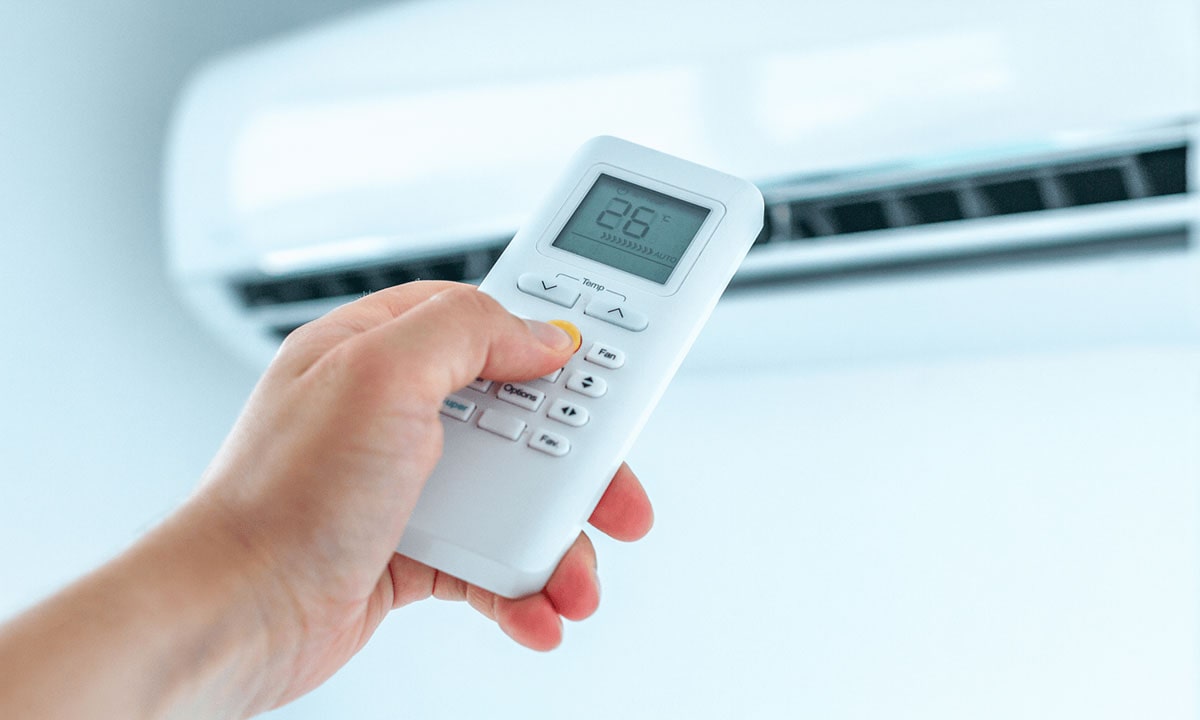Mini-split heat pumps are highly efficient heating and cooling systems that consist of an outdoor unit (i.e. condenser) and one or more indoor units (i.e. evaporators). These systems use refrigerant to transfer heat from one area to another, allowing for zoned heating and cooling.
In this guide we will:
- Compare and contrast the advantages and disadvantages of mini-split heat pumps
- Review the various types of mini-split heat pump units
- Identify the factors to consider when choosing a unit to install for customers
Due to its energy-efficiency, size, ability to zone different areas of a home and easy installation process, mini-split heat pumps have become a popular choice for home heating and cooling.
Advantages
Size
Perhaps the most significant benefit of mini-split heat pumps is their size. Both the indoor and outdoor units are much smaller than a typical central air or furnace system.
Its size allows for easy installation and freedom with placement—they can be on the floor, mounted on the wall or attached to the ceiling.
Variable Refrigerant Flow
A ductless mini-split easily adapts to your needs. It monitors the home’s outside and inside temperatures to decide how much cooling or heating is needed. It’s able to fine-tune heating and cooling due to its variable refrigerant flow (i.e. VRF) system.
With VRF, the system releases the right amount of refrigerant needed for each indoor air component, making the system energy efficient by minimizing heat transfer.
Easy Installation
As the name suggests, ductless mini-split systems are ductless. They provide a lot of versatility that many other systems don’t have, as it frees up a lot of space usually taken up by ductwork. Because of this, the mini-split can be installed virtually anywhere.
A ductless mini-split can save a lot of space for customers with smaller homes and apartments. The system can also work for those who don’t have attics or basements.
Silence
Unlike central air or furnaces, mini-split heat pumps are a lot quieter to operate. The inside components are distributed around the home and use low-powered fans to disperse air throughout each room.
The design of a mini-split system contributes to its quietness. Ductworks often make a lot of rattling and banging noises due to their vibration when air passes through. Mini-split heat pumps make less noise as air travels through due to its less turbulent air.
Energy Rebates
Thanks to their efficiency, mini-split heat pumps can qualify customers for equipment-related tax benefits and credits under many different circumstances.
Disadvantages
Upfront Cost
Compared to other systems, mini-splits generally offer cost and energy savings over time. However, the initial installation process can be expensive, with an average price of about $1,750 per ton (12,000 BTU per hour) of cooling capacity. This is about 30% more expensive than central air, minus the ductwork.
Homeowners will spend an average of $3000 for mini-split installation (including materials and labor).
Appearance
Although mini-split heat pumps allow for different placement options, its appearance can distract some homeowners since they can be hanging off the wall or ceiling.
Types of Mini-Split Heat Pumps
- Single-zone mini-split: Consists of a single outdoor and indoor unit. It’s designed to control the temperature of one room.
- Multi-zone mini-split: Composed of two or more indoor units for one outdoor condenser. Each unit in this system can operate independently of the others and be set to different temperatures.
- Wall-mounted mini-split: Installed near the top of a wall. These are the most popular because they’re the least expensive option.
- Ceiling cassette mini-split: Installed on the ceiling. They provide a wider airflow and are ideal for customers who want their heating and cooling system concealed without taking up a lot of space.
- Concealed duct mini-split: Mounted on the ceiling but connected to one or more ducts. These are ideal for customers who want to heat/cool multiple rooms or a large individual area.
Key Factors to Keep in Mind When Choosing a System for Your Customer
BTU Output
Mini-split heat pumps are efficient and powerful. When recommending a system for your customer, pay attention to the BTU output. BTU (i.e. British Thermal Unit) refers to the amount of energy required to increase the temperature of a pound of water by 1 degree Fahrenheit. A higher BTU rating system is more powerful, meaning it has a higher heat output, while a system with a lower BTU rating is less powerful.
To determine the appropriate BTU for your customer, you need to figure out each room’s square footage using a mini-split. The best rule of thumb is to multiply the room size (in sq ft) with 20-30 to get a BTU value. 20 is eco-friendly, while 30 is the most powerful. 12,000 BTU units are the most common for single-zone mini-splits.
Energy-Efficiency
SEER and HSPF ratings are crucial energy-efficiency metrics for heating and cooling. SEER (i.e. Seasonal Energy Efficiency Ratio) measures how energy-efficient the cooling effect of the mini-split is. The bigger the number, the more energy-efficient the system is. HSPF (i.e. Heating Seasonal Performance Factor) is the same thing as SEER, but it’s used for heating instead of cooling.
Since a mini-split system is for cooling and heating, each rating is as important as the other. Both SEER and HSPF affect your customer’s energy bill.
The minimum SEER rating for air conditioners is 14, while most air conditioners are rated from 14-22.
As for HSPF, most air conditioners are rated between 8-10. Anything over 10 is generally considered better, and for a heat pump to have the ENERGY STAR label, it must have an HSPF of 8.2 or higher and a SEER of 12 or higher.
Brand
Choosing the right brand is very important, as its reliability is crucial in the HVAC industry.
For the more prominent brands, MRCOOL, Mitsubishi Electric, Fujitsu and LG are the best. They’ve been in the industry for years and have an excellent reputation for mini-split systems.
For smaller, less prominent brands, Pioneer, Daikin and Kilmaire are good options. They do not have the reputation that the more prominent brands have, but they offer reliable mini-split models at lower prices.
Want to streamline your entire operations with next level software? Schedule a personalized FieldEdge demo today!
Mini-Split Heat Pumps: A Great Option for Your Customers
When helping your customer choose a new AC option or upgrade, don’t hesitate to mention mini-split heat pumps. Mini-split heat pumps are a great option for customers and provide an enhanced level of flexibility.
Despite their upfront cost, they’re incredibly energy-efficient and offer many different types depending on your customers’ needs. Make sure to pay attention to SEER and HSPF ratings, branding and BTU output to recommend the best system to your customers.
Related: New 2023 Residential Efficiency Standards: What HVAC Companies Should Know




